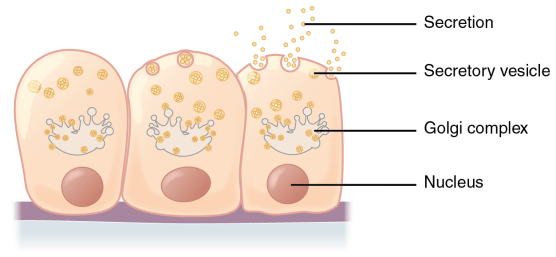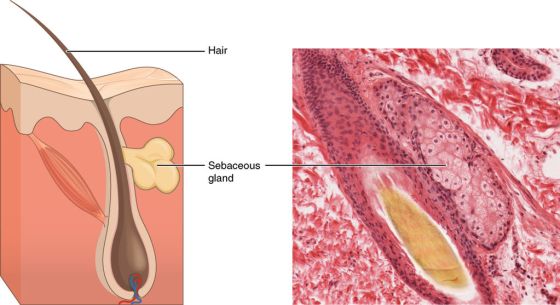What is the Difference Between Merocrine and Holocrine Glands
The key difference between merocrine and holocrine glands is that merocrine glands can secrete substances without damaging the cells while the secretions caused by holocrine glands destroy the cells.
A gland is an organ that produces and releases substances to perform a specific function. There are two types of glands in the body. Endocrine glands are ductless and mainly produce hormones. Exocrine glands release their products through a duct. Merocrine and holocrine glands are types of exocrine glands. Such glands produce and release substances such as sweat, saliva, tears, digestive juices and release them to a duct or to the body surface.
CONTENTS
What are Merocrine Glands?
Merocrine glands are a type of exocrine glands that release secretions without damaging the cells. Merocrine glands excrete secretions via exocytosis through secretory cells. Excretion occurs into a walled epithelial duct and then to the body surface or into the lumen. In fact, the term merocrine refers to the production of a secretion. Therefore, merocrine glands are able to produce secretions. A few examples of such glands are salivary glands, pancreatic glands, and eccrine glands.

Figure 01: Modes of Secretion by Merocrine Glands
Salivary glands secrete saliva into the oral cavity through specific ducts. Saliva gives many benefits to the oral cavity; it provides protection, buffering, pellicle formation, tissue repair, and antimicrobial action in the oral cavity. Most importantly, it also aids in taste, digestion, and speech. Pancreatic glands produce and secrete enzymes important for digestion. Eccrine glands are also known as sweat glands. They aid in thermoregulation of the body surface. Eccrine glands secrete sweat to cool the body surface in the presence of water.
What are Holocrine Glands?
Holocrine glands are a type of exocrine glands that release secretions consisting of disintegrated cells along with secretory products. Such secretions are produced in the cytoplasm and released by rupturing the plasma membrane. Thus, holocrine glands destroy the cells, and the products are secreted into the lumen. Holocrine glands are categorized as the most damaging type of secretion. Two examples of such glands are sebaceous glands of the skin and meibomian glands of the eyelid.

Figure 02: Sebaceous Glands
Sebaceous glands are small glands that produce oil in the skin of mammals. They are usually attached to the hair follicles on the skin. They release a fatty substance called sebum into the follicular duct and secrete it to the skin surface. These glands help in keeping the skin flexible and prevent drying by keeping the skin hydrated throughout. Meibomian glands also release an oil secretion along the edge of eyelids near the eyelashes. This oil aids in the tear film where the tears are stored, and it prevents the tears from drying.
What are the Similarities Between Merocrine and Holocrine Glands?
What is the Difference Between Merocrine and Holocrine Glands?
Merocrine glands have the ability to secrete substances without damaging the cells, while secretions caused by holocrine glands destroy the cells. Thus, this is the key difference between merocrine and holocrine glands. Moreover, most holocrine glands are associated with the external environment, while merocrine glands are associated with the internal body and external environment.
The below infographic presents the differences between merocrine and holocrine glands in tabular form for side by side comparison.
Summary – Merocrine vs Holocrine Glands
Merocrine and holocrine glands are exocrine glands, and both glands have the function of secretion. Merocrine glands have the ability to secrete substances without causing any damage to the cells. In contrast, holocrine glands destroy the cells when secreting substances. Merocrine glands secrete enzymes to help in digestion and water for thermoregulation. A few examples include salivary glands, pancreatic glands, and eccrine glands. Holocrine glands secrete a fatty substance, and examples are sebaceous glands and meibomian glands. So, this summarizes the difference between merocrine and holocrine glands.
Image Courtesy:
1. “405 Modes of Secretion by Glands Merocine” By CFCF – Own work (CC BY-SA 4.0) via Commons Wikimedia
2. “407 Sebaceous Glands” By OpenStax College – Anatomy & Physiology, Connexions Web site, Jun 19, 2013. (CC BY 3.0) via Commons Wikimedia